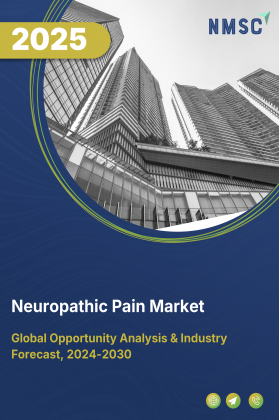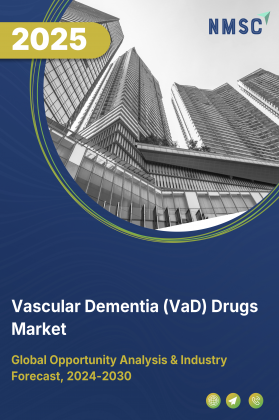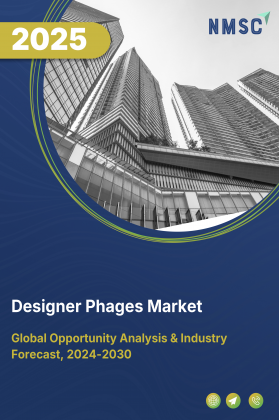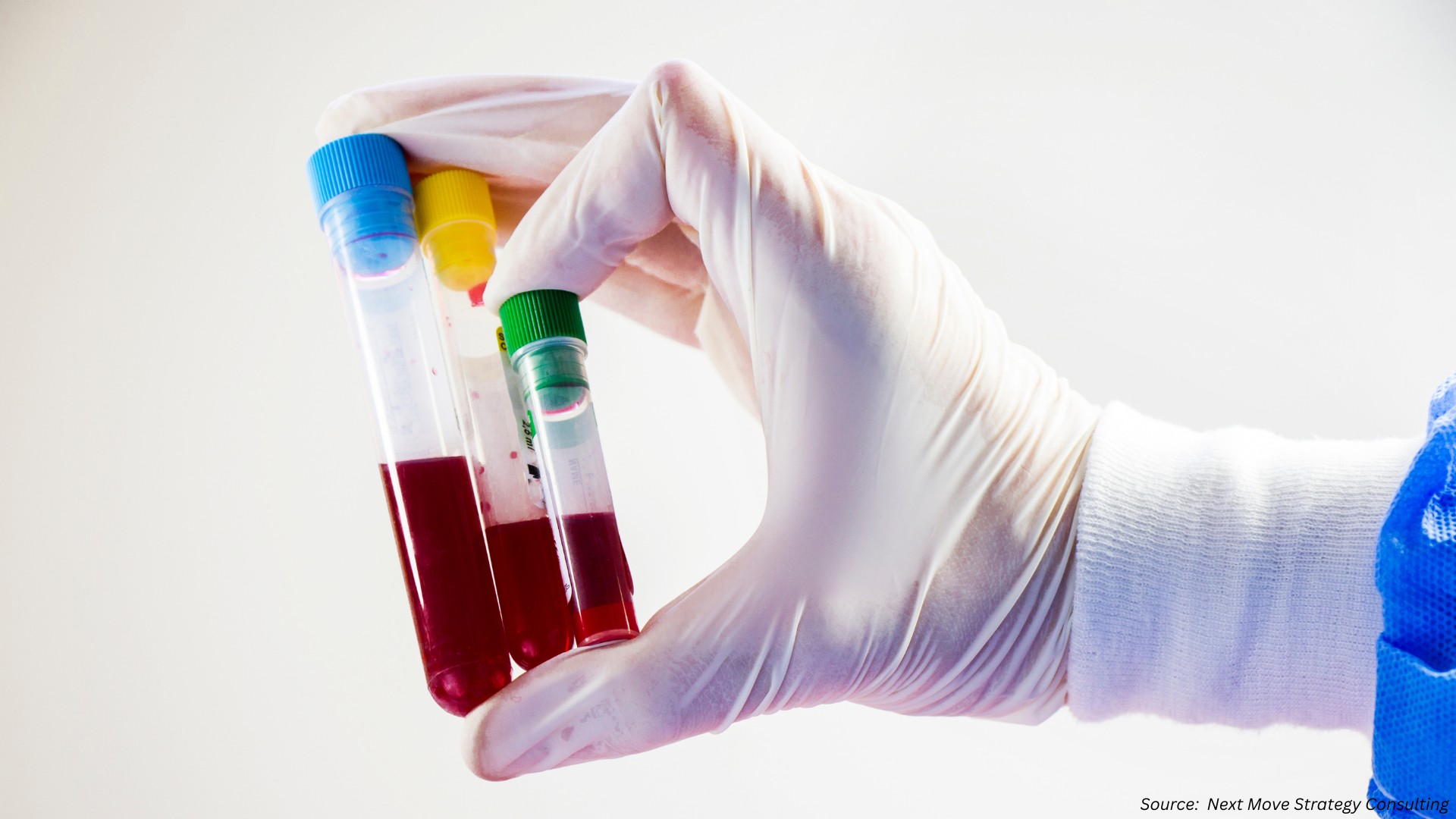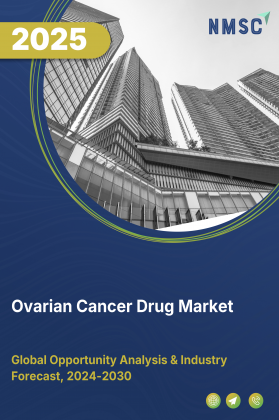
Ovarian Cancer Drug Market by Cancer Type (Epithelial Ovarian Cancer, Germ Cell Tumors, Stromal Tumors, and Others), by Treatment Type (Targeted Therapy, Chemotherapy, Hormone Therapy, and Immunotherapy), by Route of Administration (Oral, Intravenous, Intraperitoneal), by Distribution Channels (Hospital Pharmacies, Retail Pharmacies, and Online Pharmacies), and by End-Users (Hospitals, Cancer Treatment Centers) – Global Opportunity Analysis and Industry Forecast, 2025 – 2030.
Industry Outlook
The global Ovarian Cancer Drug Market size was valued at USD 4.71 billion in 2024 and is estimated to reach USD 5.21 billion in 2025 and is predicted to reach USD 8.58 billion by 2030 with a CAGR of 10.50% from 2025-2030. The sector is witnessing significant growth driven by the rising prevalence of ovarian cancer and increasing demand for effective therapies, including chemotherapy, targeted therapies, hormone therapies, and immunotherapies.
The expansion of oral and home-administered treatments is improving patient convenience, adherence, and quality of life, further boosting market demand. Advances in personalized medicine, supported by biomarker-based diagnostics, are enabling tailored therapies and enhancing treatment outcomes.
While high treatment costs pose a restraint by limiting patient access, ongoing research and development of novel targeted drugs, immunotherapies, and combination therapies present substantial growth opportunities, encouraging investment, pipeline expansion, and innovation across the market.
Rising Incidence of Ovarian Cancer Drives the Market Growth
The prevalence of ovarian cancer is steadily increasing due to factors such as aging populations, lifestyle changes, and genetic predispositions. This growing incidence drives the demand for effective treatments, including chemotherapy, targeted therapies, hormone therapies, and immunotherapies.
As more patients are diagnosed each year, pharmaceutical companies and healthcare providers are focusing on developing innovative drugs to improve survival rates, progression-free survival, and overall quality of life. This trend expands the patient pool and encourages investment in research, clinical trials, and commercialization of novel ovarian cancer therapies, fueling the ovarian cancer drug market growth.
Expansion of Home Care and Oral Therapies Boost the Market Demand
The growing availability of oral ovarian cancer drugs and therapies that be administered at home is improving patient convenience and adherence to treatment regimens. Home-based treatment options reduce the need for frequent hospital visits, lower healthcare costs, and enhance the quality of life for patients undergoing long-term therapy.
This trend is encouraging the adoption of self-administered medications and oral formulations, which in turn is driving the demand for ovarian cancer drugs. Pharmaceutical companies are increasingly focusing on developing oral and home-use therapies to cater to patient preferences, thereby expanding the market and supporting sustained growth.
Growing Focus on Personalized Medicine Fuels the Market Expansion
Advances in diagnostic technologies and biomarker identification are enabling more personalized treatment approaches for ovarian cancer. Personalized medicine allows physicians to tailor therapies based on an individual patient’s genetic profile, tumor characteristics, and response patterns, leading to improved efficacy and reduced side effects.
The use of companion diagnostics, such as tests that identify patients eligible for targeted therapies, is increasing the adoption of precision treatments. This focus on individualized care is driving the development and use of targeted cancer drugs, enhancing patient outcomes and fuelling the ovarian cancer drug market growth.
High Treatment Costs Limits the Market Growth
Ovarian cancer drugs, particularly targeted therapies and immunotherapies, are expensive, making treatment unaffordable for many patients. The high cost of research, development, clinical trials, and regulatory approvals contributes to the overall price of these therapies.
Limited reimbursement in certain healthcare systems and high out-of-pocket expenses restrict patient access, slowing adoption rates. As a result, the financial burden on patients and healthcare providers acts as a significant restraint on the ovarian cancer drug market expansion.
Emerging Therapies and Novel Drug Development Creates New Growth Opportunities
The ongoing research and development of innovative therapies, such as next-generation targeted drugs, immunotherapies, and combination treatments, presents a significant opportunity in the ovarian cancer drug market trends. Advances in biotechnology and clinical research are enabling the development of drugs that overcome resistance, improve survival rates, and address unmet medical needs.
Companies investing in these novel therapies have the potential to capture a larger share of the market, expand treatment options for patients, and strengthen their competitive position, creating a major growth opportunity in the global sector.
Market Segmentations and Scope of the Study
The ovarian cancer drug market report is segmented on the basis of cancer type, treatment type, route of administration, end-users, distribution channels and regions. On the basis of cancer type, the market is categorized into epithelial ovarian cancer, germ cell tumors, stromal tumors, and others. On the basis of treatment type, the market is classified into targeted therapy, chemotherapy, hormone therapy, and immunotherapy. On the basis of route of administration, the market is divided into oral, intravenous, intraperitoneal, and subcutaneous/intramuscular. On the basis of end-users, the market is segmented into hospitals, cancer treatment centers, specialty clinics, and home care/at-home therapy. On the basis of distribution channels, the market is distributed through hospital pharmacies, retail pharmacies, and online pharmacies. The regional breakdown includes North America, Europe, Asia-Pacific, and the Rest of the World (RoW).
Geographical Analysis
The growing prevalence of ovarian cancer in North America is a significant driver of the regional drug market. According to the American Cancer Society, approximately 20,890 women are expected to be newly diagnosed with ovarian cancer in the United States in 2025, with an estimated 12,730 deaths. This increasing patient population is driving demand for effective treatments, including chemotherapy, targeted therapies, hormone therapies, and immunotherapies.
As more patients require care, pharmaceutical companies and healthcare providers are focusing on developing and commercializing innovative therapies to improve survival rates, progression-free survival, and overall quality of life, fueling market growth.
The rapid development and adoption of targeted therapies, such as PARP inhibitors, angiogenesis inhibitors, and PD-1/PD-L1 inhibitors, are driving growth in the European ovarian cancer drugs market. These therapies offer improved efficacy and reduced side effects compared with conventional treatments, making them increasingly preferred by physicians and patients.
The availability of companion diagnostics enables personalized treatment approaches, enhancing patient outcomes. Continuous investment by pharmaceutical companies in research, clinical trials, and commercialization of innovative targeted therapies is further expanding treatment options and contributing to sustained ovarian cancer drug market growth across the region.
Increasing investments in healthcare infrastructure across Asia-Pacific are driving the adoption of advanced ovarian cancer treatments. In India, public healthcare expenditure is projected to reach 1.9% of GDP in FY26, compared to 2.5% in FY25, according to the Economic Survey 2024-25, as reported by India Brand Equity Foundation (IBEF) in 2025.
Expansion of cancer treatment centers, oncology hospitals, and diagnostic facilities is improving access to chemotherapy, targeted therapies, hormone therapies, and immunotherapies. These developments support clinical research, facilitate the introduction of innovative drugs, and enhance treatment delivery, driving higher adoption of therapies and contributing to ovarian cancer drug market growth in the region.
In the Rest of the World (RoW), the growing awareness of ovarian cancer and improvements in healthcare infrastructure in emerging markets are driving demand for effective therapies. Expansion of hospitals, cancer treatment centers, and diagnostic facilities is improving access to chemotherapy, targeted therapies, hormone therapies, and immunotherapies.
Governments and healthcare organizations are investing in oncology programs, training, and clinical research, which enhances the availability and adoption of advanced ovarian cancer treatments. These developments are enabling pharmaceutical companies to introduce innovative therapies and expand their reach, contributing to market growth across the Rest of the World.
Strategic Innovations Adopted by Key Players
Key players in the ovarian cancer drug industry are strengthening their pipelines and expanding global access through regulatory approvals, strategic acquisitions, and partnership agreements, while advancing innovative therapies.
-
In July 2025, Genentech's Columvi (mosunetuzumab) combination therapy has been approved in over 35 countries, including the EU, based on STARGLO data.
-
In March 2025, AbbVie reported that ELAHERE (mirvetuximab soravtansine) showed consistent progression-free survival benefits in platinum-resistant ovarian cancer patients over a median follow-up of 30.5 months.
-
In December 2024, GSK's combination of Jemperli (dostarlimab) and Zejula (niraparib) met the primary endpoint of progression-free survival in a late-stage trial for advanced ovarian cancer.
-
In November 2024, Vivesto signed an option agreement with Zhejiang Zhida Pharmaceutical for its anticancer product Apealea® (paclitaxel micellar), including milestone payments and sales royalties.
-
In February 2024, AbbVie Inc. acquired ImmunoGen, gaining its flagship cancer therapy ELAHERE to enhance its oncology portfolio. This acquisition improved the company’s oncology pipeline and accelerated its entry into the commercial market for ovarian cancer treatments.
Key Benefits
-
The report provides quantitative analysis and estimations of the ovarian cancer drug market from 2025 to 2030, which assists in identifying the prevailing market opportunities.
-
The study comprises a deep-dive analysis of the ovarian cancer drug market including the current and future trends to depict prevalent investment pockets in the market.
-
Information related to key drivers, restraints, and opportunities and their impact on the ovarian cancer drug market is provided in the report.
-
Competitive analysis of the key players in the ovarian cancer drug market share is provided in the report.
-
SWOT analysis and Porters Five Forces model is elaborated in the study.
-
Value chain analysis in the market study provides a clear picture of roles of stakeholders
Ovarian Cancer Drug Market Key Segments
By Cancer Type
-
Epithelial Ovarian Cancer
-
Germ cell Tumors
-
Stromal Tumors
-
Others
By Treatment Type
-
Targeted Therapy
-
PARP Inhibitors
-
Angiogenesis Inhibitors
-
PD-L1 Inhibitors
-
-
Chemotherapy
-
Platinum-based Agents
-
Taxanes
-
Others
-
-
Hormone Therapy
-
Estrogen Modulators
-
GnRH Agonists / Antagonists
-
-
Immunotherapy
-
Oncolytic Viral Therapies
-
Monoclonal Antibodies
-
By Route of Administration
-
Oral
-
Intravenous
-
Intraperitoneal
-
Subcutaneous / Intramuscular
By Distribution Channels
-
Hospital Pharmacies
-
Retail Pharmacies
-
Online Pharmacies
By End-Users
-
Hospitals
-
Cancer Treatment Centers
-
Speciality Clinics
-
Home Care / At-Home Therapy
By Region
-
North America
-
The U.S.
-
Canada
-
Mexico
-
Europe
-
The UK
-
Germany
-
France
-
Italy
-
Spain
-
Denmark
-
Netherlands
-
Finland
-
Sweden
-
Norway
-
Russia
-
-
Rest of Europe
-
Asia-Pacific
-
China
-
Japan
-
India
-
South Korea
-
Australia
-
Indonesia
-
Singapore
-
Taiwan
-
Thailand
-
Rest of Asia-Pacific
-
-
RoW
-
Latin America
-
Middle East
-
Africa
-
Key Players
-
AstraZeneca
-
Genentech (Roche Group)
-
AbbVie Inc.
-
Pfizer, Inc.
-
Johnson & Johnson Services, Inc.
-
Boehringer Ingelheim International GmbH
-
Vivesto AB
-
Genmab A/S
-
Merck & Co., Inc.
-
Bristol-Myers Squibb
-
GlaxoSmithKline (GSK)
-
Amneal Pharmaceuticals LLC
-
Cartherics
-
Amgen Inc.
Report Scope And Segmentation
|
Parameters |
Details |
|
Market Size in 2025 |
USD 5.21 Billion |
|
Revenue Forecast in 2030 |
USD 8.58 Billion |
|
Growth Rate |
CAGR of 10.50% from 2025 to 2030 |
|
Analysis Period |
2024–2030 |
|
Base Year Considered |
2024 |
|
Forecast Period |
2025–2030 |
|
Market Size Estimation |
Billion (USD) |
|
Growth Factors |
|
|
Countries Covered |
28 |
|
Companies Profiled |
10 |
|
Market Share |
Available for 10 companies |
|
Customization Scope |
Free customization (equivalent up to 80 working hours of analysts) after purchase. Addition or alteration to country, regional, and segment scope. |
|
Pricing and Purchase Options |
Avail customized purchase options to meet your exact research needs. |

















 Speak to Our Analyst
Speak to Our Analyst



